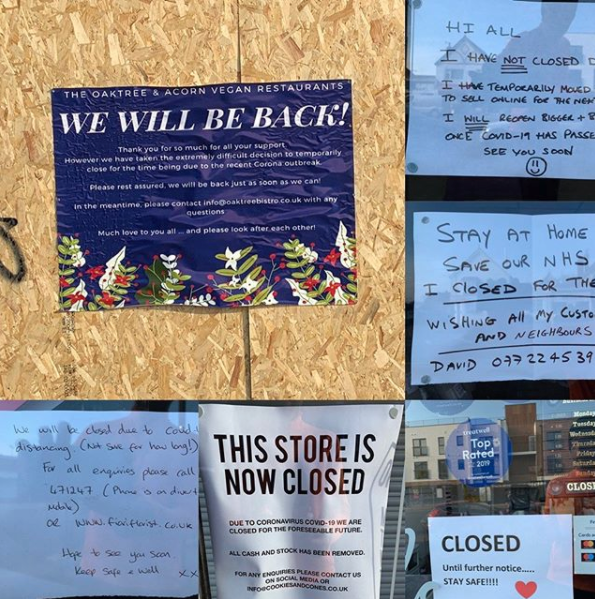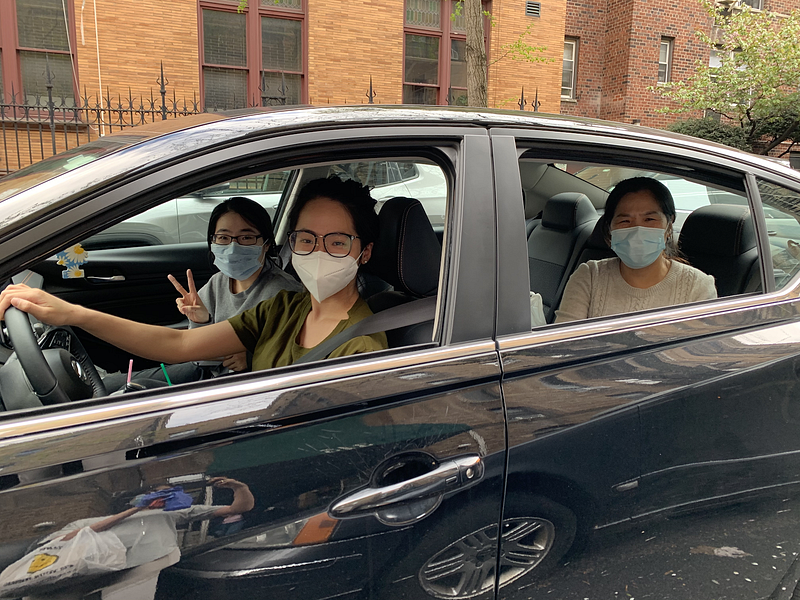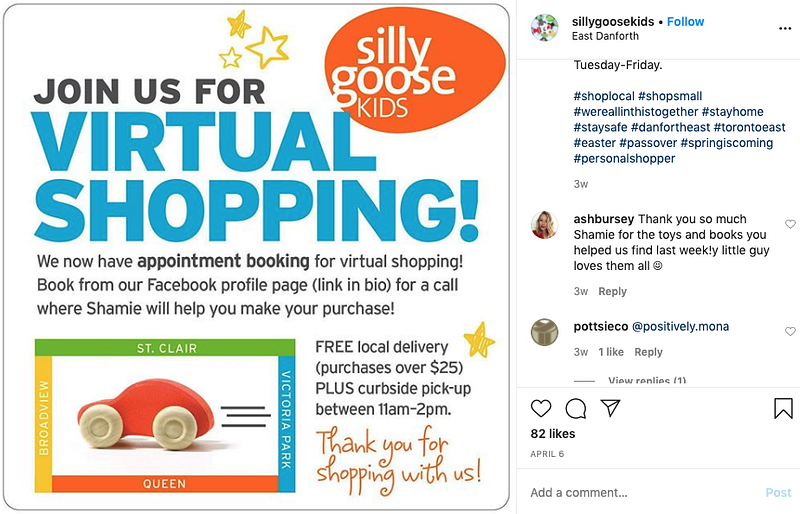Recently, someone wrote these words to me, and they rang very true: “Some things get easier when so many things get harder.”

No need to labor the point that our times of lockdown are leading to changes both large and small, amid tragedy, depression, strife, and fear. However, we will always discover ways to adapt and find hope. Nowhere is this more true than in the changes we’re seeing around us now, with companies finding new ways to keep going through home delivery and direct to consumer outreach, and with the big delivery companies facing huge existential challenges as suddenly their business model is adopted by vastly higher numbers than anything that has gone before.
Going back in history, there is a parallel we can draw between the changes we see now in the patterns of trade around us and what happened with Lubeck and Hamburg in the 16th Century. At that time, Lubeck was the queen of Hanseatic trade among Baltic nations; Hamburg the sister city looking more towards the Atlantic. Lubeck tried to defend its position through aggression toward anyone challenging them, whereas Hamburg embraced new opportunities, opened up trade, allowed immigration, and new ways of doing business.
Lubeck experienced a steady decline; Hamburg became increasingly important. As Professor of strategy Dr. Prateek Raj points out, “dominant cities may become unattractive and decline when they end up serving the interests of a privileged few and refuse to change.”
Telling words.
I wonder if we’re going to need to reword this quote to: “dominant companies may become unattractive and decline when they end up serving the interests of a privileged few and refuse to change”
In these times, it’s a truism to point to the ubiquity of e-commerce as a new way of life. What does that mean for the whole delivery sector? What new behaviors are we starting to see? What’s the opportunity for us all as businesses as well as consumers of companies who are able to deliver to us?
First of all, a lot of companies’ usual routes to market are now completely blocked. Wholesalers who’d normally sell to retailers are finding those outlets shut. Retailers, unless they’re providing essential services, have been forced to close. So many turn to home delivery, as this list of New York restaurants and wholesalers, attests.
But people adapt and sometimes incredibly quickly, to what the Board of Innovation is now calling the “Low Touch Economy”, a neat shorthand for a new set of societal norms and very quickly ingrained habits that have arisen through this time of the global pandemic.
In the British seaside town where I live, this quickly became real when one neighbor put a flyer through everyone’s letterbox asking if they wanted to be part of a WhatsApp group so we could check in on each other. Someone then organized a single delivery to our street from a local butcher who doesn’t normally do home deliveries (they usually specialize in supplying restaurants and schools). Now, the butcher has a whole street’s worth of orders — he visits the street regularly every week after our neighbor aggregates all the orders, and trusts us to pay him online afterward. This new mix of trust, low tech, and opportunity just works.
The same has happened for fruit and vegetable deliveries in my town. Is this a new kind of commerce? One where localities and collectives are able to go directly to local businesses, rather than the highly individualistic 1:1 relationships that e-commerce has thus far relied on? Is it a new form of neighborliness that goes back to the basics of what the big guys like Amazon have been building for years?
It’s too early to tell, but I believe these experiments in collective, neighborly delivery may be the basis for a whole new way of life for home delivery itself.
What happens when your shop has to close, but your products are plants? You can’t keep them shut up in a shop for three months — your stock will just die. But what if you allow lots of your neighbors to offer a “foster home” for plants so that your stock can be properly looked after — small deposit with the full price of the plant at risk in case it dies? To be sure, it’s not easy adapting to this — an email from a local family-run garden center attests to this — they get 300 emails a day and have one delivery van with three people. There’s no way they can scale, but they’re trying their best.
New Patterns of Trade
Patterns of trade are shifting. The lockdown has forced a huge challenge upon companies that have anything to do with home delivery, or who are ready and willing to try it. People who deliver goods are our essential workers now — putting themselves at risk every day, in order to bring food, goods or medicines to the rest of us. Now that we realize their value, are delivery companies going to start treating them better? Are they going to stop trying to undercut everyone else by excessive promotions that simply distort the market and wasted effort?
Much has been written about Amazon and other e-commerce players that are currently dominating the market. From (perhaps inevitable) tales of exploitation and profiteering through to anecdotal evidence of not exactly treating their people as they should. One supermarket home delivery worker recently said to me that they can’t access delivery slots from their own company, and they’re the ones on the front line every day. On the flip side, one of our designers, Adeline Moreau, pointed out that some shops in London have created joint packages like Pages of Hackney and Wild and Woolly so you can share delivery costs across products with a local partner like the bicycle delivery service, Pedalme.
Are home delivery and e-commerce the new digital normal? They probably are, and there are challenging times ahead for people to get organized for it. But, what gives me tremendous hope is how quickly a lot of businesses around me have adapted, and just using the very basic tools at their disposal. It doesn’t have to be a massive investment — I’m seeing many Minimum Viable Products entering the market all around me right now. For example, two daughters of a New York noodle restaurant Go Noodle built from the ground up by their parents have taken to selling frozen dumplings on top of their regular jobs, putting themselves at great risk, in an effort to help the family business pay the Manhattan rent. Here are Jian Lin, her sister Amy Lin and their mother Marilyn Weng out on a delivery run.

A few hours’ drive North in Toronto, Silly Goose Kids toy store is providing a completely different way to shop. They’re offering virtual tours of the store itself by appointment — you get a 15 minute slot with Shamie, one of the owners, then they’ll deliver items to you, or offer curbside pick up between set times every day. It may not be an ‘essential service’ or as important as food, but what Shamie and the team are doing is bringing a bit of joy to the times we’re living through, as well as showing the way for how physical stores might engage with customers in the future… The customer feedback on each of their Instagram posts is amazing: “Thank you to Shamie for helping me shop for my kiddos birthday presents! You helped make a pandemic birthday special”

Going back to Hamburg and Lubeck that I mentioned at the beginning, I wonder if we might reword Professor Raj’s conclusions: “dominant companies may become unattractive and decline when they end up serving the interests of a privileged few and refuse to change”
Businesses large and small are having to change all around us, but they’re leaning into it and discovering all sorts of new potential, in spite of the hard work and risk. The big delivery companies are also facing their challenges. I hope that a lot of what we’re learning will stick and that delivery can become more neighborly, quirky, local, and a lot less exploitative.
Illustrations in this article are by Claire Lorman, Senior Designer at Method. Edited by Erin Peace (Method) and contributions by Chantal Schonbachler (Method).